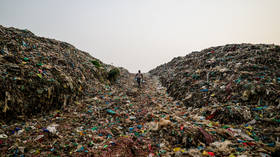Dragon vs Tiger

The world's two fastest growing economies with the world’s largest populations, India and China, appear to have reached an economic face-off in the battle for Asian supremacy.
The giants have huge mutual export amounts, but it is mostly raw materials on India's part, while China sells manufactured goods, which is putting New Delhi at a growing disadvantage.But where India led the way in IT and back offices, China raced ahead in mobilizing its masses onto the factory floor, fueling a huge trade deficit and a reality India is forced to accept.“China is known as the manufacturing hub of the entire world,” admits Swaran Singh, Professor of international politics, organization and disarmament at Jawaharlal Nehru University, New Delhi India. “A lot of people believe that the whole developed world is using China for manufacturing because they are using their environment, their resources and their labor to produce things that we will utilize.”India boasts world-class space and nuclear programs, yet struggles to create everyday jobs making everyday goods.Something a cotton tycoon that talked to RT knows all too well. It is cheaper for him to export to China to get the job done, then let India buy it back.“We make a profit of ten per cent more in the international market than the domestic market,” shared Indian cotton exporter Sanjay Agarwal.Ironically, it is Indian efficiency that is part of the problem, with supply rapidly outpacing domestic demand.“If we don’t export, then the cotton prices in India will crash and farmers will suffer as they won’t get even the original price. This will decrease the quantity of cotton and even the Indian government is encouraging the exporting of cotton,” Sanjay Agarwal said.In the cotton fields of India lies the heart of the Indian-Chinese trade relationship. More than 70 per cent of exports from India to China are raw materials like cotton. However, almost 90 per cent of the exports from China to India are manufactured goods.If India is selling well, then why should it matter? Well, having a US$20 billion gap with your nextdoor neighbor puts power in their hands and makes jobs and savings dry up at home.And economists know that only by sewing up a successful manufacturing sector will India’s large, unskilled workforce be soaked up. But it is a blind spot that is leading to blind faith.“We are different and we should focus on different models and different ways of growing,” states Professor Swaran Singh. “Best of luck to the Chinese, they’re doing very well and I’m sure they’ll do very well. It’s not in competition that we are looking at China growing and India not growing. Maybe both countries will be growing. It is a very different world that we might see in the future.”Indian traders seem satisfied too, because the set up means the money keeps rolling in.“The benefit in exporting is that we get a bigger volume of cotton and we also get paid on time,” said Indian cotton broker Rakesh Shetty.But New Delhi is worried, knowing it has to cut its cloth before its economic run of luck is sewn up.













